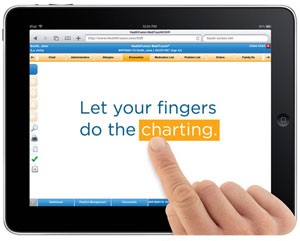June 18, 2015 - “Medical device data collection has increasingly become a part of the fabric of health IT system deployment,” writes John Zaleski, PhD, CPHIMS, in his new book Connected Medical Devices: Integrating Patient Care Data in Healthcare Systems (HIMSS Books, 2015).
What began as a tool for research has become, according to a survey by CapSite, a major purchasing goal of more than half of all U.S. hospitals and health systems. In this interview, Dr. Zaleski, a noted author and inventor, discusses the growth of medical device integration (MDI) solutions; the benefits and challenges it presents to hospitals and health systems; and what vendors, advocates and government agencies are doing to standardize and improve MDI.

HIMSS Books: In your book you describe the beginnings of MDI as “esoteric” and used primarily by those conducting research within a healthcare environment. Today, according to a recent CapSite survey, more than half of U.S. hospitals and health systems are planning to purchase and implement an MDI solution. What were the causes behind this dramatic shift?
John Zaleski: Partially the maturing deployment of electronic health record systems; partially the maturing of the complexity of integration that requires higher-frequency, higher accuracy, higher fidelity data, such as clinical decision support methods within electronic health record systems; partially the motivation of Meaningful Use and needs for improvement in patient safety; partially the Affordable Care Act (ACA). Other specific motivations, such as the recognition that improved patient care management can be achieved through better, more accurate data.
HIMSS Books: MDI is touted as a beneficial to patient care. What evidence backs up this assertion?
Zaleski: Improvements in patient safety through better data. For example, communication of data that can be used for patient care management. The 2012 AAMI/FDA Medical Device Interoperability Summit identified “Seven Clarion Themes.” Foremost, interoperability impacts patient safety. The ECRI Institute identified interoperability within the Top 10 Health Technology Hazards for 2013. Based on a 2012 AAMI survey of health IT professionals in 1,900 U.S. hospitals, interoperability issues placed first and second on the AAMI list of Top 10 Medical Device Challenges. Specifically,
- Medical devices and systems on the IT network (cited by 72 percent of respondents).
- Integrating device data into electronic health records (EHRs) (cited by 65 percent of respondents).
Studies of the benefits of receiving patient care data into electronic health record systems as a mechanism for improving nurse-charting workflow have been reported by individual institutions in terms of time to chart. But, the Westhealth Institute, in a report published in 2013, estimated that through their top-down and bottom-up modeling, an annual saving of $30 billion may be liberated by widespread adoption of functional interoperability for medical devices.
The complete blog is available at: http://blog.himss.org/2015/06/09/medical-device-integration-growth-trends-challenges-an-interview-with-john-zaleski-phd-cphims/
Source: Nancy Vitucci. HIMSS Blog. Posted on June 9, 2015. http://blog.himss.org/2015/06/09/medical-device-integration-growth-trends-challenges-an-interview-with-john-zaleski-phd-cphims/




